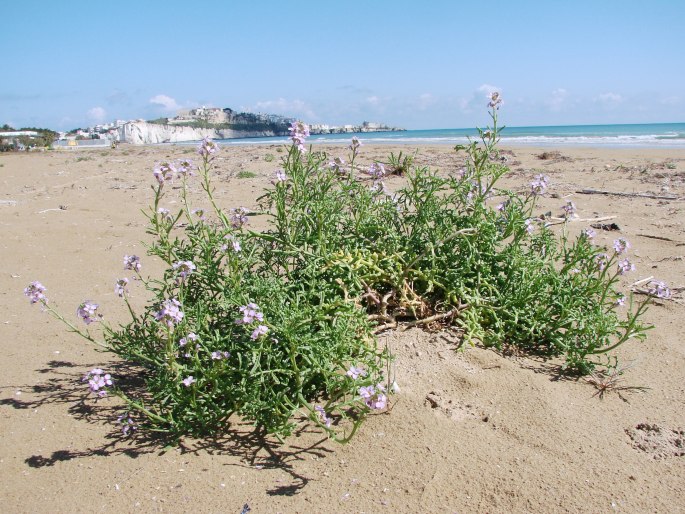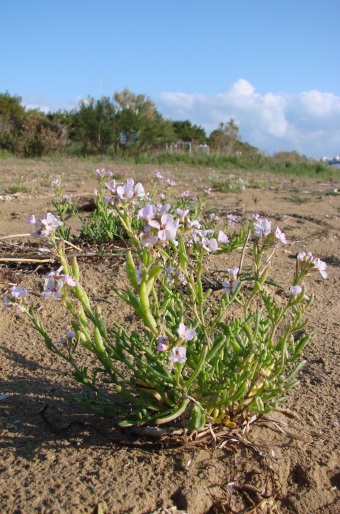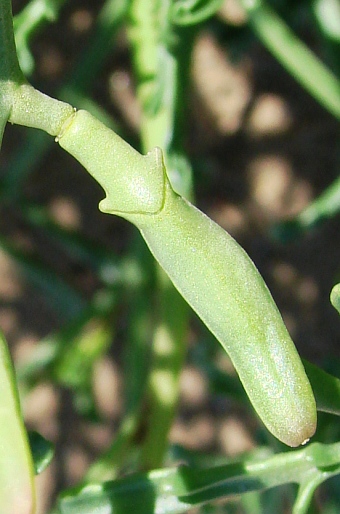Syn.: Bunias cakile L., Cakile monosperma Lange, Rapistrum cakile (L.) Crantz
Family: Brassicaceae Burnett

Distribution: Coasts of Europe – the Mediterranean, Black and Baltic Seas, and the North Atlantic Ocean. Perhaps native on the Canary Islands and Cape Verde island of Boavista. Introduced to North America, south of South America (Argentina and Uruguay), European inland (Czechia) and southern part of Australia.
Ecology: It grows on sandy seacoast – halophyte.
Description: Annual plant with a decumbent stem, 15–30(–60) cm tall, glabrous, glaucous; leaves succulent, subentire to pinnatisect. The inflorescence is a terminal raceme, flowers tetramerous, petals obovate, 5–14 mm. The fruit is 12–25(–30) mm long, lower segment often with 2 lateral, more or less deflexed projections at the apex, upper segment larger, 4-angled to terete.
Note: Variable species that is divisible into at least 4 subspecies in Europe – nominate subspecies, Cakile maritima subsp. baltica, C. m. subsp. euxina, C. m. subsp. aegyptiaca.





These images were taken in Italy, Gargano, Vieste (April 16, 2008).


